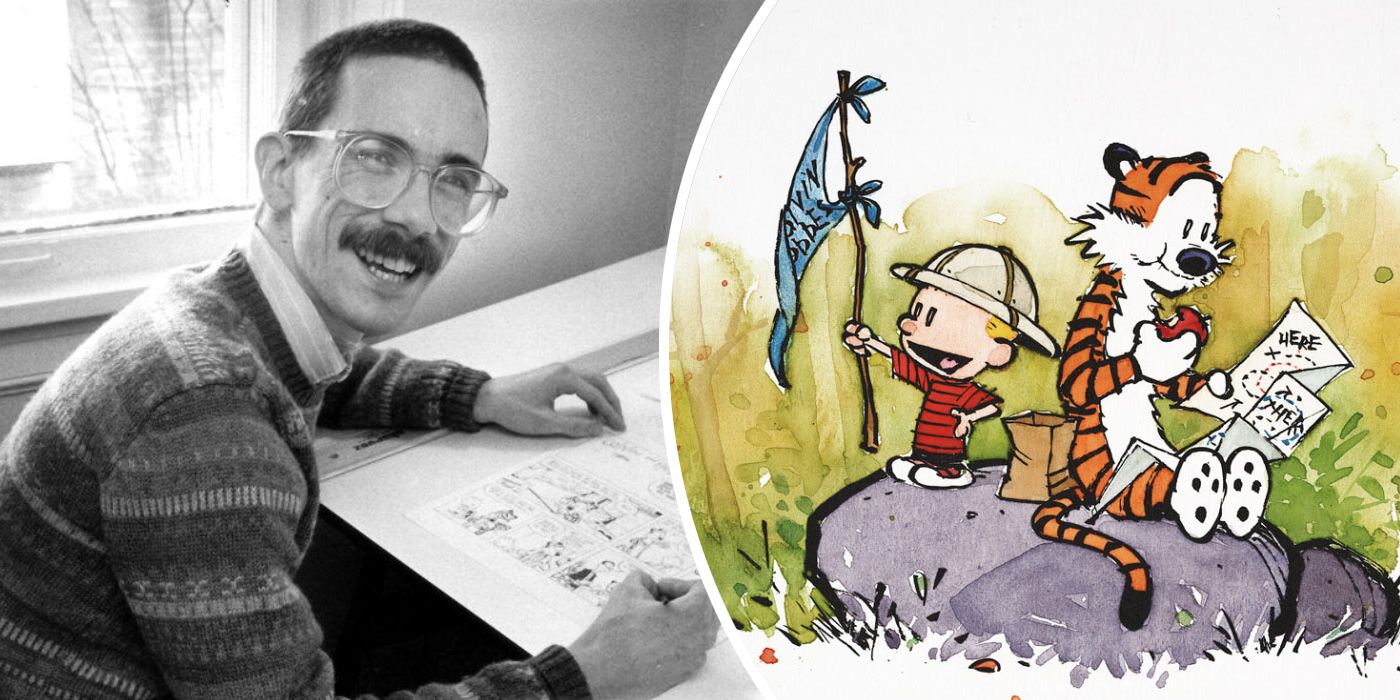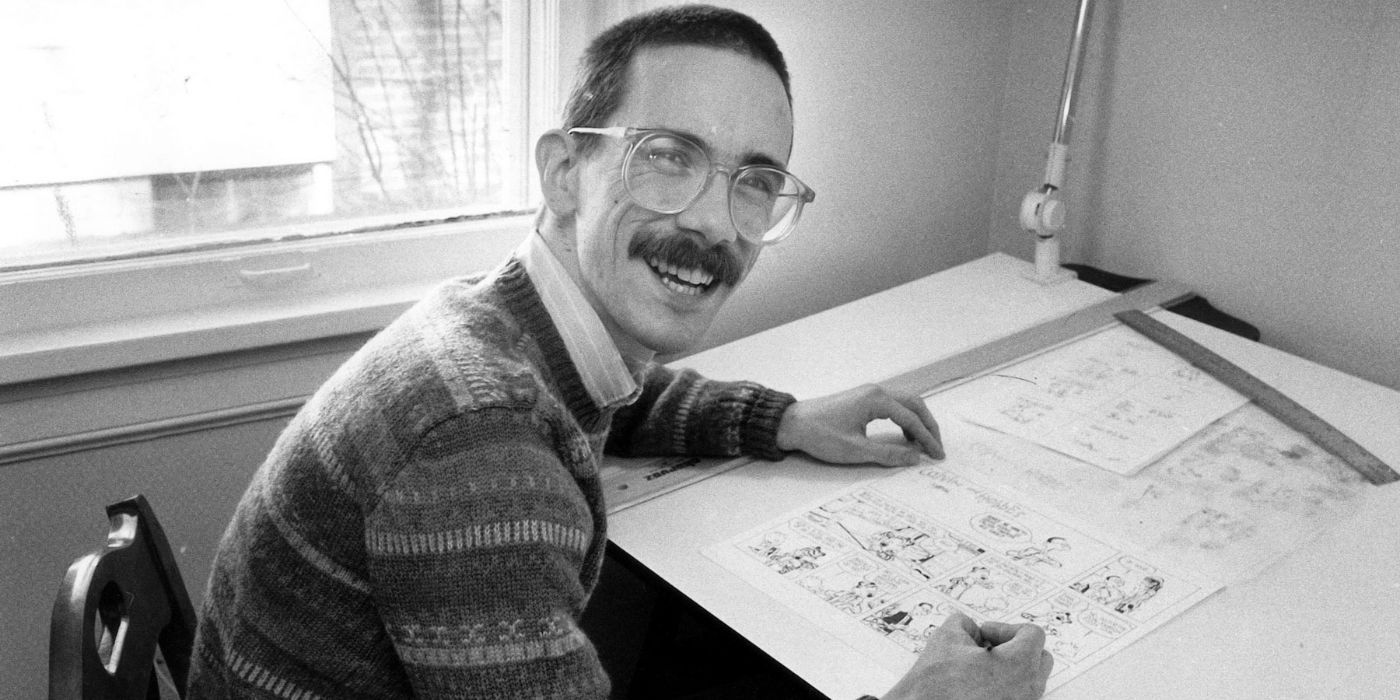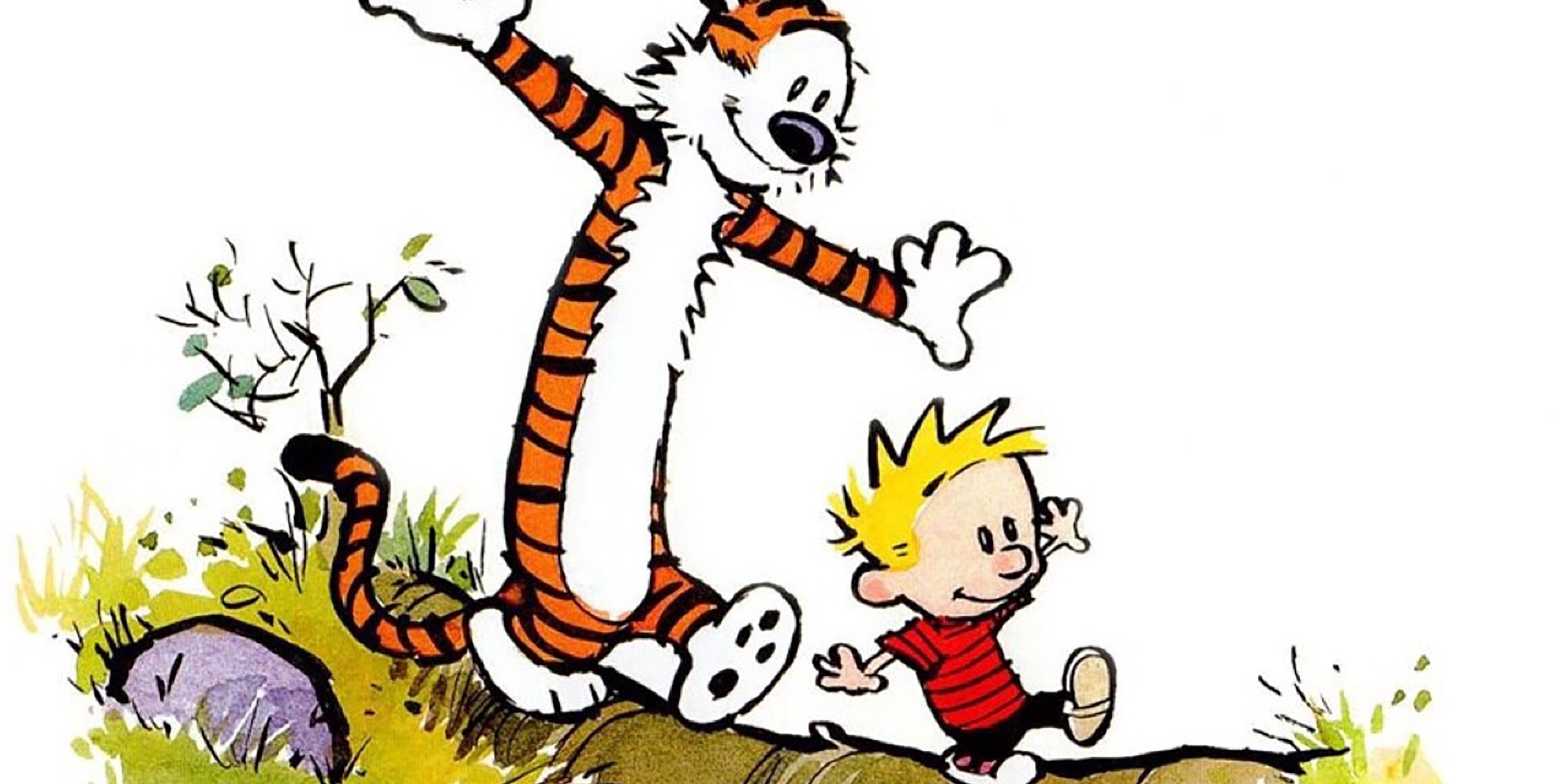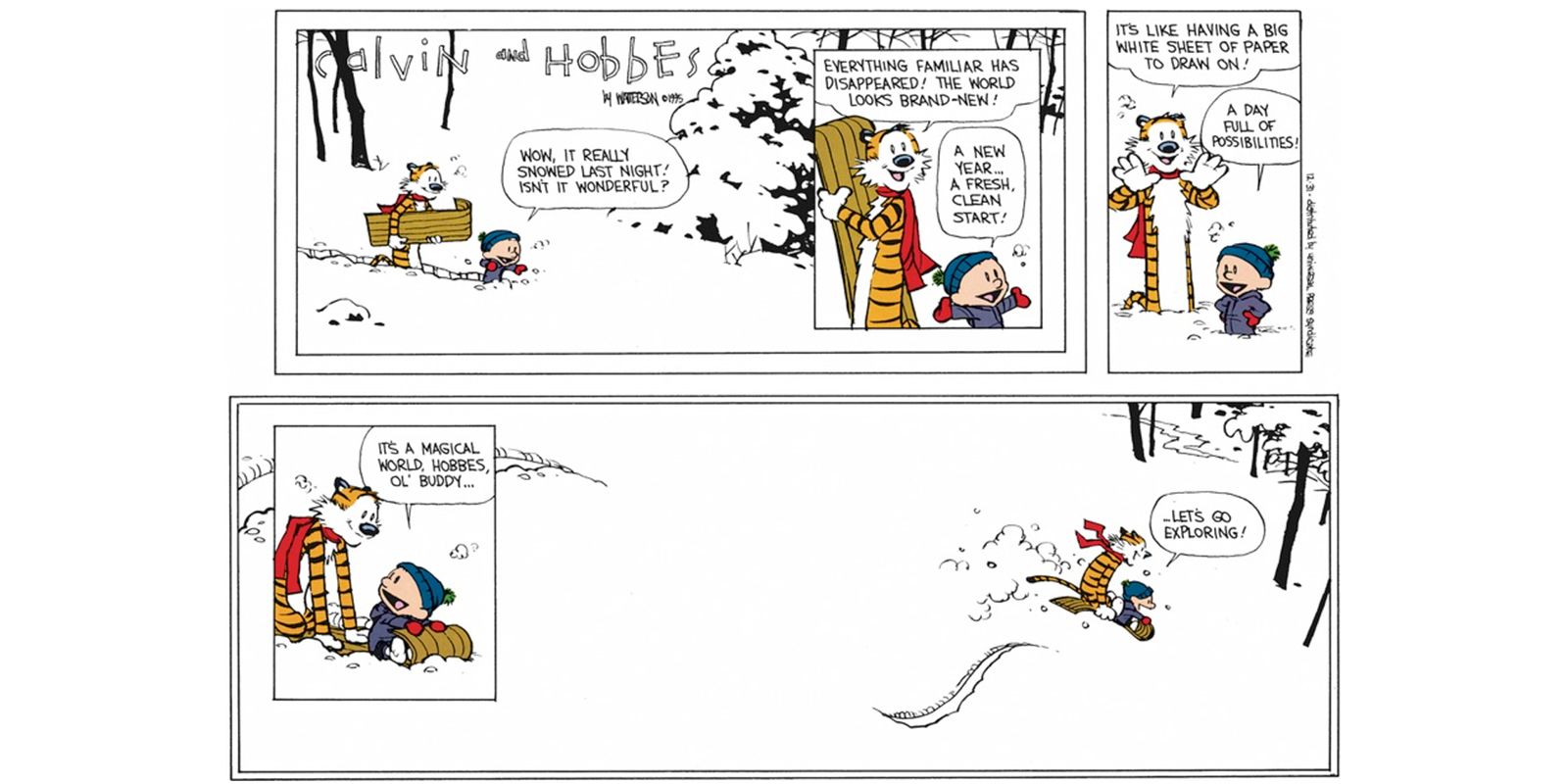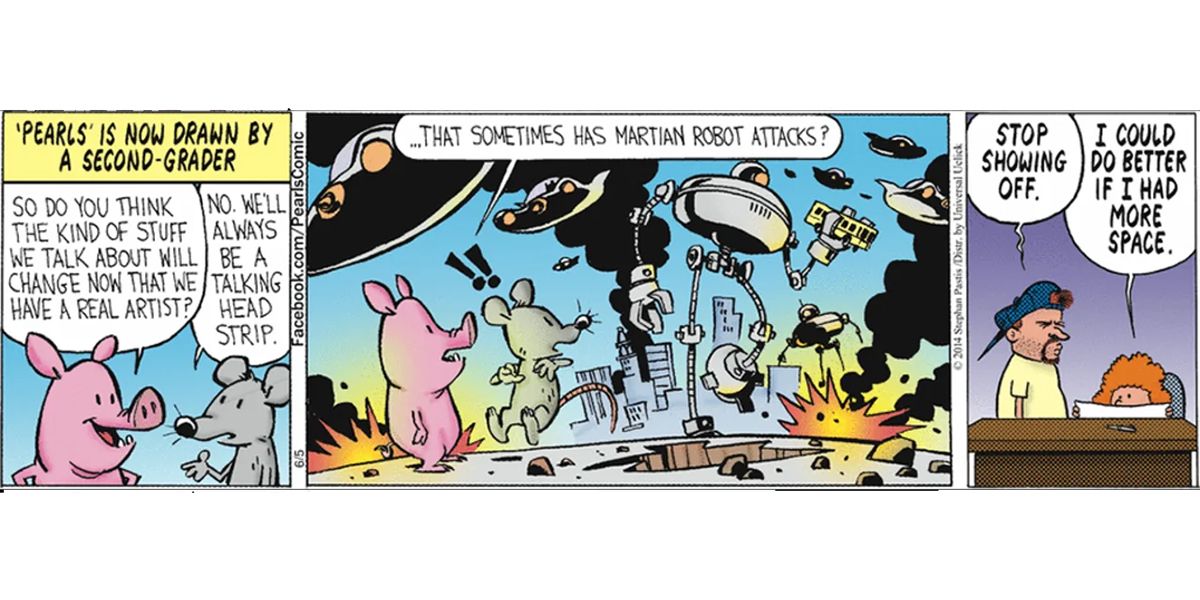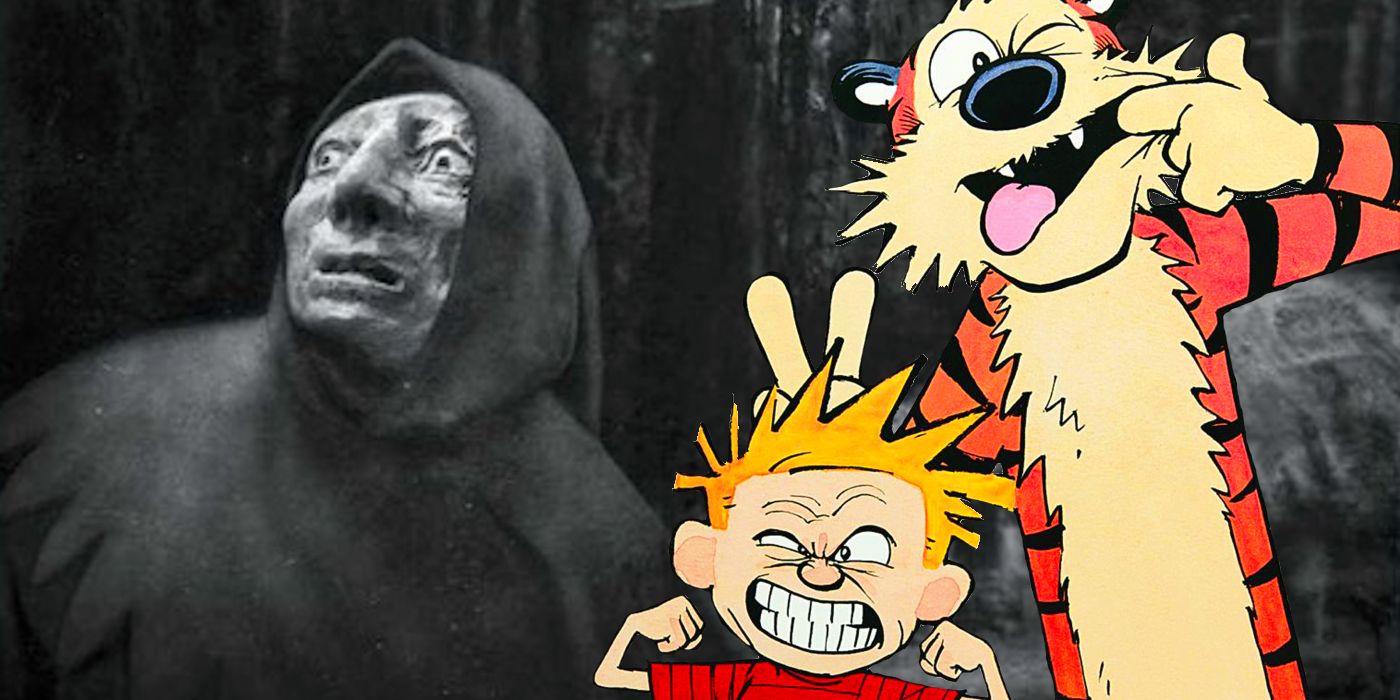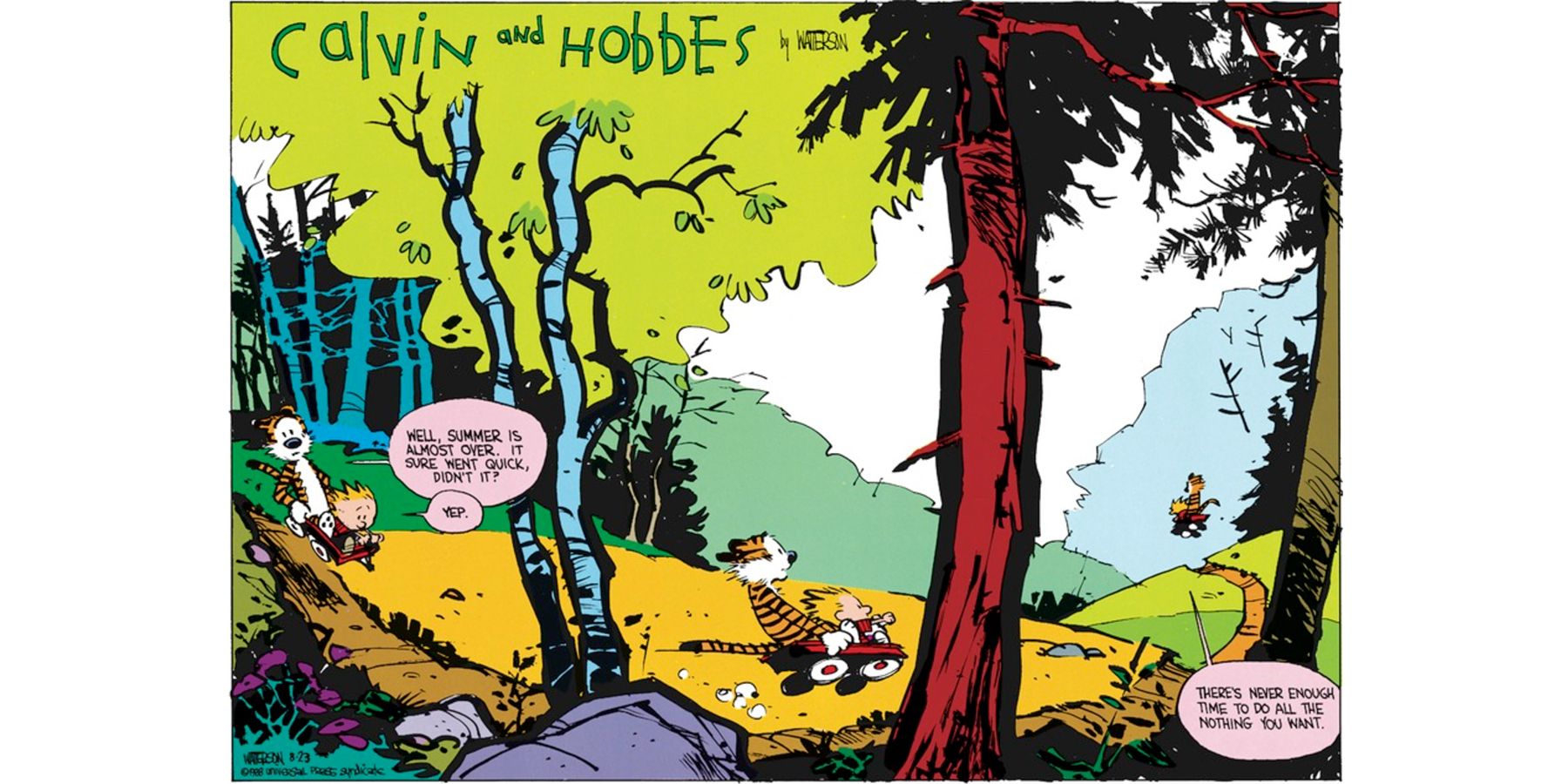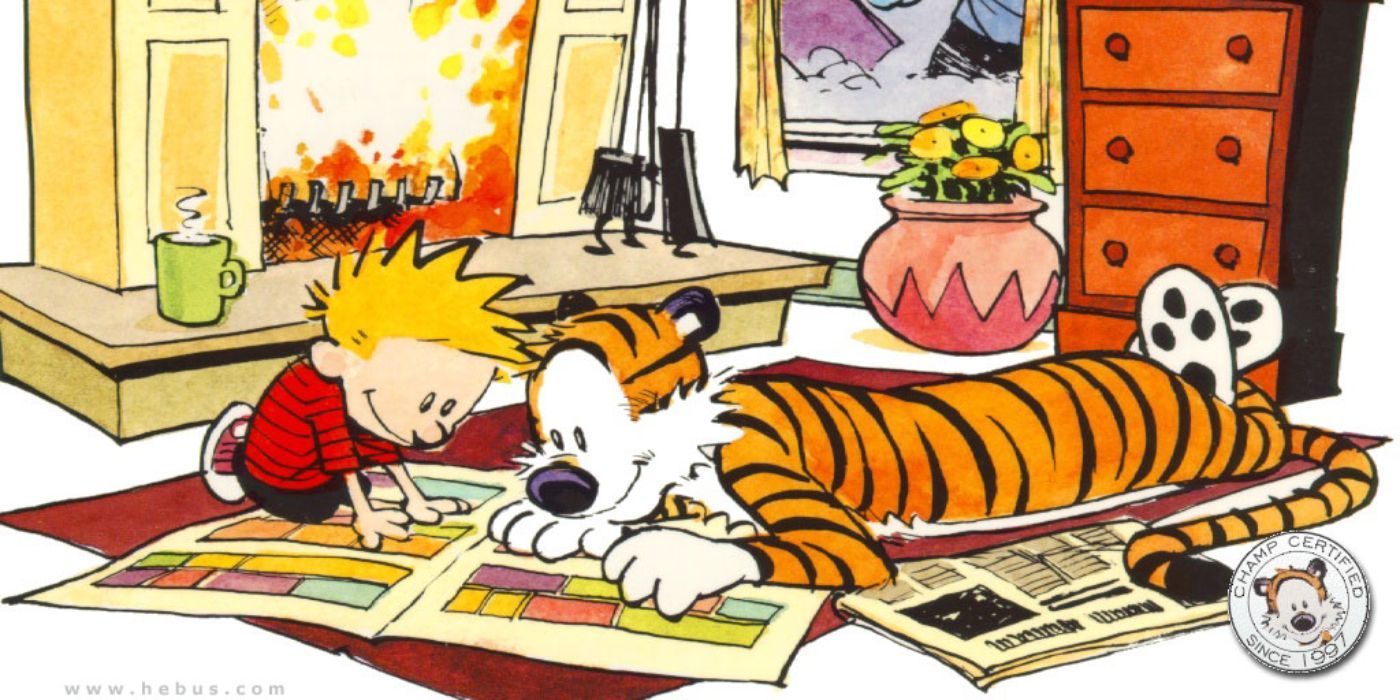Quick Links
Calvin and Hobbes began as a simple cartoon about a boy and his stuffed tiger having adventures together. Over time, however, it grew into one of the most popular and beautifully-crafted comic strips ever to appear in newspapers. Even though new Calvin and Hobbes strips ended in 1995 after a decade in newspapers, the comic has kept its immense popularity, and its compilation books are still selling. Fans of Calvin and Hobbes enthusiastically built their own collections, and now those same fans are introducing the timeless cartoons to the next generation.
Most of the success Calvin and Hobbes earned is thanks to its creator, Bill Watterson, and his exacting standards regarding his own art and ethics. Watterson viewed comic strips as serious art, no different from a fine oil painting. This care and respect for his craft showed in every meticulously inked panel. For Watterson, the comic was its own reward. He had no interest in peripheral merchandise, even though it would have been extremely lucrative for him. Instead, Watterson just wanted to create the best art he could, and he did exactly that.
Bill Watterson’s Early Career
In order to truly appreciate Calvin and Hobbes for the masterpiece it is, it’s important to understand its creator, Bill Watterson. Watterson grew up in suburban Ohio, where he has spent most of his life. The Midwestern setting of his early life set the scene for Calvin’s idyllic neighborhood in the comics, which is residential but borders on lush woods, perfect for exploring. Watterson started drawing comics at age eight and continued drawing prolifically throughout his youth.
During high school, Bill Watterson drew cartoons for his school newspaper and yearbook. When he went to university, he studied political science intending to become a political cartoonist. During his college years, he drew comic strips for the university paper, including the first “Spaceman Spiff” adventures, which would become fantasies in Calvin and Hobbes. After Watterson's first job drawing political cartoons ended with him being fired after only six months, however, he began to reconsider his path. He worked for several years as a freelance illustrator and a designer at an advertising firm while pursuing comics in his free time.
For aspiring comic strip artists in the 1980s, success came in the form of syndication. Once a syndicate signed an artist, it would promote their work and license it to newspapers interested in carrying the content. For five years, as he was working as a commercial artist, Bill Watterson would repeatedly draft a month’s worth of cartoons and send them to a syndicate, only to be rejected. Finally, after following some feedback from one syndicate (who later rejected the comic!), Watterson refined two characters from one of his rejected proposals, and Calvin and Hobbes found a home with Universal Press Syndicate, debuting in 35 newspapers across the United States.
Calvin and Hobbes’ Success
Calvin and Hobbes may have debuted in only 35 newspapers across the United States, but it quickly grew in popularity. Within a year, the comic was in 250 papers, and at its peak, it appeared in at least 2,400 newspapers, becoming one of the main attractions on the comics page. Calvin and Hobbes has been published in at least 50 countries, and collections of the comics have sold over 50 million copies. The complete collection has become both the heaviest and most expensive book to land a spot on the New York Times bestsellers list.
Two primary factors contributed to Calvin and Hobbes' success: its quality and its timelessness. Bill Watterson hated being in the limelight, and he did very little publicity for the comic, instead allowing it to speak for itself. Watterson took immense pride in the quality of his art, and as his popularity increased, it allowed him greater leeway with publishers. He experimented with the strip’s format, particularly in Sunday comics, where he would draw anywhere from one immense, highly detailed panel, to over a dozen small panels when presenting stop-motion styled action sequences.
Bill Watterson’s artistic talent is particularly on display in comics where Calvin has fantasies, whether he’s dreaming about being a space explorer or a ferocious dinosaur terrorizing tiny townspeople. Watterson enjoyed the irony that Calvin and Hobbes' fantasy scenes possessed a more realistic art style than the scenes depicting reality. For Watterson, the point of the comic was to show life from the perspective of a child. Even though Hobbes couldn’t physically do some things he’s shown doing in the comics (because he’s a toy), Watterson wanted his readers to see Hobbes and the world through Calvin's eyes. For Calvin, imagination and fantasy were every bit as real as school or eggplant casserole.
Calvin and Hobbes remains incredibly popular with readers of all ages to this day because Bill Watterson consciously created it to be timeless. Calvin doesn’t have the latest and greatest technology. His usual toys are a stuffed animal, a wagon or sled (depending on the season), and a cardboard box. By keeping the story unmoored from era-related technology, current events, or politics, Calvin and Hobbes could exist in nearly any modern time period. The result is a collection of comics as relevant to kids today as they were in the 1980s and 90s.
The End of Calvin and Hobbes
At the start of his career, Bill Watterson imagined he might continue writing comic strips for the rest of his life, much like his idol Charles Schulz. After all, he had been drawing comics in one form or another since his childhood. After ten years of meeting daily deadlines and taking two months-long sabbaticals, however, Watterson decided to end Calvin and Hobbes while it was at the height of its popularity. On New Year’s Eve, 1995, Calvin and Hobbes headed off on their sled into the unknown, to continue their adventures in peoples’ imaginations.
Unlike many of his peers, Bill Watterson chose not to license his work, making Calvin and Hobbes books the only official merchandise bearing the characters’ likenesses. At the start of the strip’s popularity, companies periodically offered Watterson licensing deals. However, Watterson usually felt like the proposed products contradicted the messages he tried to convey through his art, which were often anti-consumerist. The syndicate pressured Watterson to merchandize, but he was popular enough that he could resist the pressure by threatening to quit if the syndicate went against his wishes.
Thanks to the popularity of Calvin and Hobbes, Bill Watterson retained almost total control over the direction of his comic. When he went on sabbatical, newspapers even paid to run old strips, out of fear of losing the comic from their pages. When Watterson announced the end of the strip, he expressed his opinion that he had achieved all he could in the medium. Watterson wanted to move on to other projects that allowed him to work at his own pace and fulfill his own artistic vision.
Watterson After Calvin and Hobbes
Since the end of Calvin and Hobbes, Watterson has largely stayed under the radar, living a “normal life.” He refuses most interview requests, and although he still creates and studies art, he's shared little of it with the public. Watterson’s first new art seen by the public was in 2011, over 15 years after his last strip. He became involved with a charity, Team Cul de Sac, which supports Parkinson’s Disease research in honor of cartoonist Richard Thompson, who was diagnosed in 2009. Watterson auctioned several pieces of new original art to support the charity. He never sold his work outside the charity auctions, though a Sunday strip he had given to his former editor recently sold at auction for almost half a million dollars.
Aside from his charity auctions, Bill Watterson has only created art to support other comic strip artists and events. He created posters for the documentary Stripped and the Angoulême International Comics Festival in 2014. Watterson provided guest art for three Pearls Before Swine comic strips and auctioned the original art for charity. He also collaborated with Bloom County cartoonist Berkeley Breathed to produce two crossover comic strips for April Fool’s Day in 2016 and 2017, though it’s unknown how involved he was in their production.
Calvin and Hobbes & Bill Watterson Today
For those who don’t have hundreds of thousands of dollars to spend on extremely rare auctions, the only way to see Watterson’s original Calvin and Hobbes comic art is in a museum. Watterson gave most of his original artwork to the Billy Ireland Cartoon Library & Museum at Ohio State University. The library houses over 3,000 of Watterson’s original comics, and has had two major exhibitions featuring his work.
Bill Watterson’s first true commercial offering since the end of Calvin and Hobbes comes out in October 2023. Watterson’s upcoming picture book, The Mysteries, is a collaboration between Watterson and caricaturist John Kascht. It's been described as a fable for adults that, according to the publisher, “invites readers to examine their place in the universe and their responsibility to others and the planet we all share.” The art in The Mysteries differs greatly from both Watterson and Kascht’s usual styles, instead featuring brooding, dark, monochromatic paintings. The theme, however, is strongly reminiscent of the philosophy Watterson communicated through his Calvin and Hobbes comics.
Inspiration for Calvin and Hobbes
When Bill Watterson was a child, he began reading the comic strips that eventually inspired his journey. Pogo and Krazy Kat were early favorites, but the one comic strip and creator that inspired him more than any other was Peanuts by Charles Schulz. Modern readers might not understand how revolutionary Peanuts was for its era, because most modern cartoonists have been employing techniques pioneered by Schulz for decades. Schulz was so influential for Watterson that the perpetually media-shy Watterson wrote a tribute to Schulz in the L.A. Times to mark Schulz’s retirement.
Calvin and Hobbes' style may have been influenced by the comics Watterson loved as a child, but the content was entirely his own. Watterson grew up in suburban Ohio, and based the setting for Calvin and Hobbes on his Midwestern home. Calvin himself isn't a reflection of Watterson as a person — the artist says he is far more similar to Hobbes. The two main characters’ names are a nod to Watterson’s background in political science. Watterson named Calvin for John Calvin, the 16th century theologian and believer in predestination, while Hobbes was named after 17th century philosopher Thomas Hobbes, who held, in Watterson’s words, “a dim view of human nature.”
Bill Watterson has admitted that sometimes real-life events influenced his comics, but that he hasn’t used any actual literal scenarios from his life. Instead, the comic focused on whatever issues felt important to him at the time. The characters Calvin and Hobbes clicked with the cartoonist immediately, and he found that once he understood them as people, it was easy to write the characters. Watterson could drop them into any scenario and know how they would react.
Many Calvin and Hobbes comic strips stood alone as amusing stories, but the comic often dealt with heavier matter as well. True to their namesakes, Calvin and Hobbes often had deep philosophical conversations concerning the nature of life, free will, civilization, and death as they wandered through the woods. The pair’s conversations often turned to important life lessons from early childhood, as well as critiques about humans' treatment of nature. Watterson also used the strip to parody the art world and critics in particular, through Calvin’s activities as a snow artist.
Where to Read Calvin and Hobbes
Calvin and Hobbes books have sold so well over the years that people might expect books to be the only place to read Calvin and Hobbes comics. The truth is the opposite. Unlike peers like The Far Side’s Gary Larson who've jealously guarded their content, Bill Watterson has made his comics easily available to fans over the internet, and has continued experiencing commercial success despite that availability. Fans can read the entire run of Calvin and Hobbes through the website GoComics, the Internet Archive, and various other comic websites. For anyone who wants to purchase those comics in an electronic format, the collections are available on Amazon Kindle and Google Books.
Of course, despite the availability of the entire Calvin and Hobbes library for free online, many fans will want to own physical copies of these classic comic strips. Anyone wanting to acquire paper copies of Calvin and Hobbes comics can enjoy the comics in several forms. The original collections are still in print and available to buy individually. Watterson also authorized several anthology volumes over the years, which collected several of the original volumes into single, large books. Finally, readers can purchase the Complete Calvin and Hobbes, which is a boxed set that includes every Calvin and Hobbes comic ever published.
Calvin and Hobbes is one of the most beloved and influential comic strips of all time. Despite the power and influence that popularity could have given artist Bill Watterson, he has always remained true to his artistic vision and prioritized the messages in his art over his commercial success. Despite that, or perhaps even because of it, Calvin and Hobbes became a long-term commercial success all on its own, thanks to the incredible quality of the comics, and the important lessons they hold for readers of all ages. Given the timeless nature of these comics, there’s no doubt that they will continue to be enjoyed for many generations to come.

